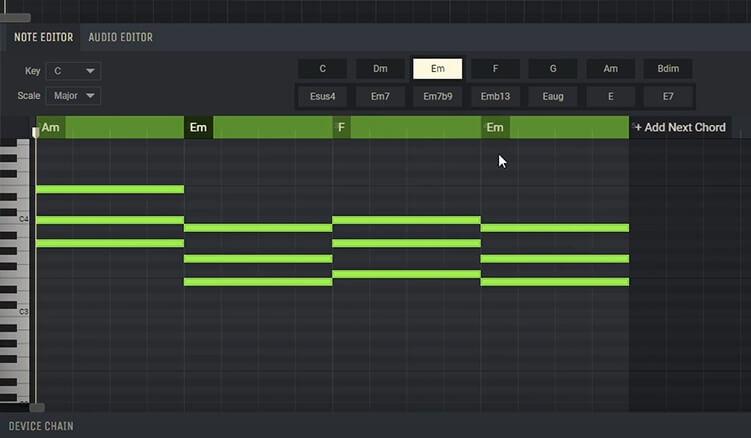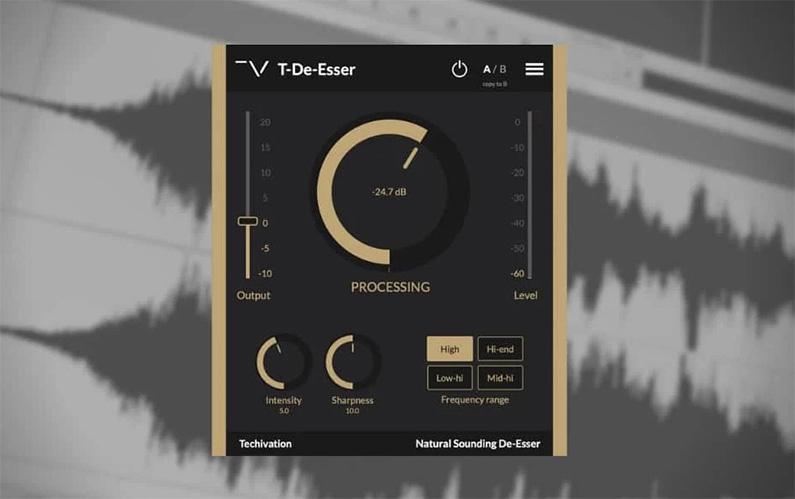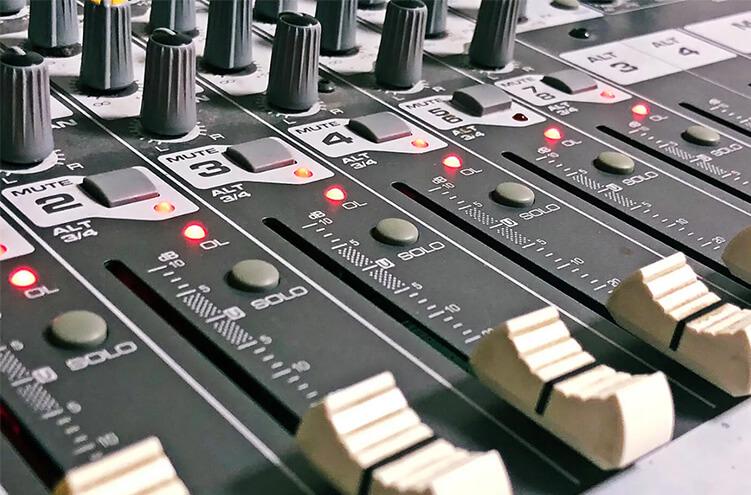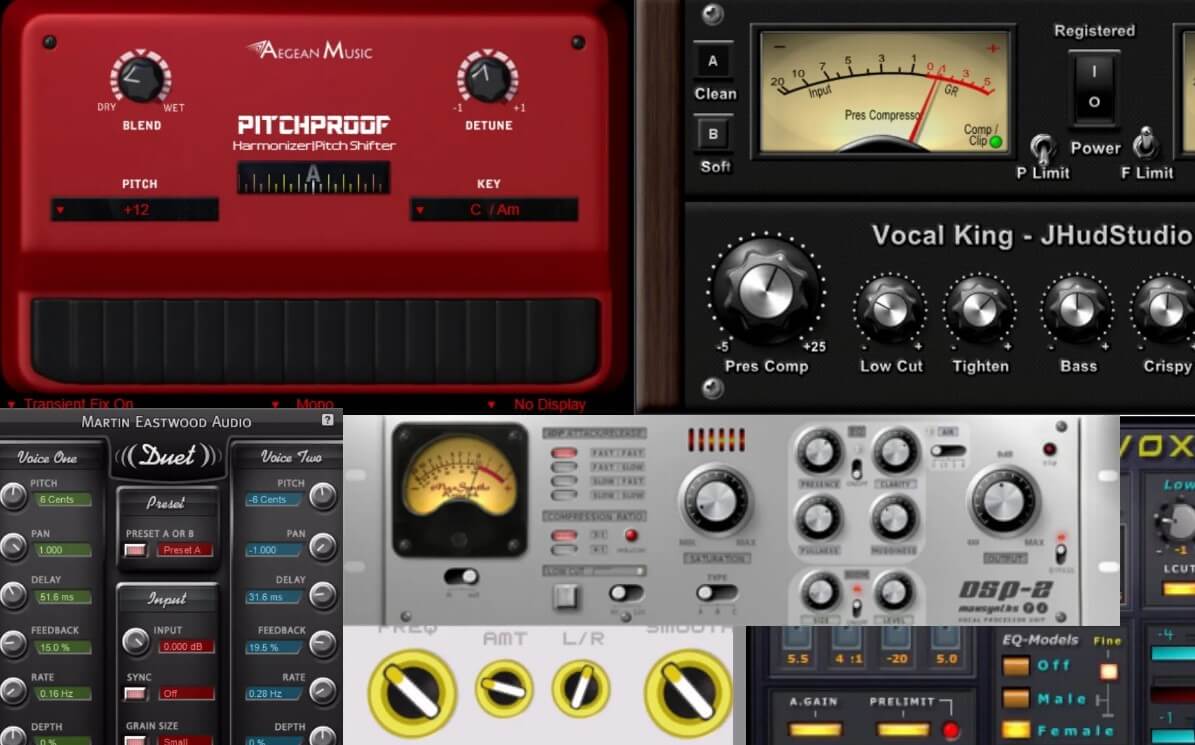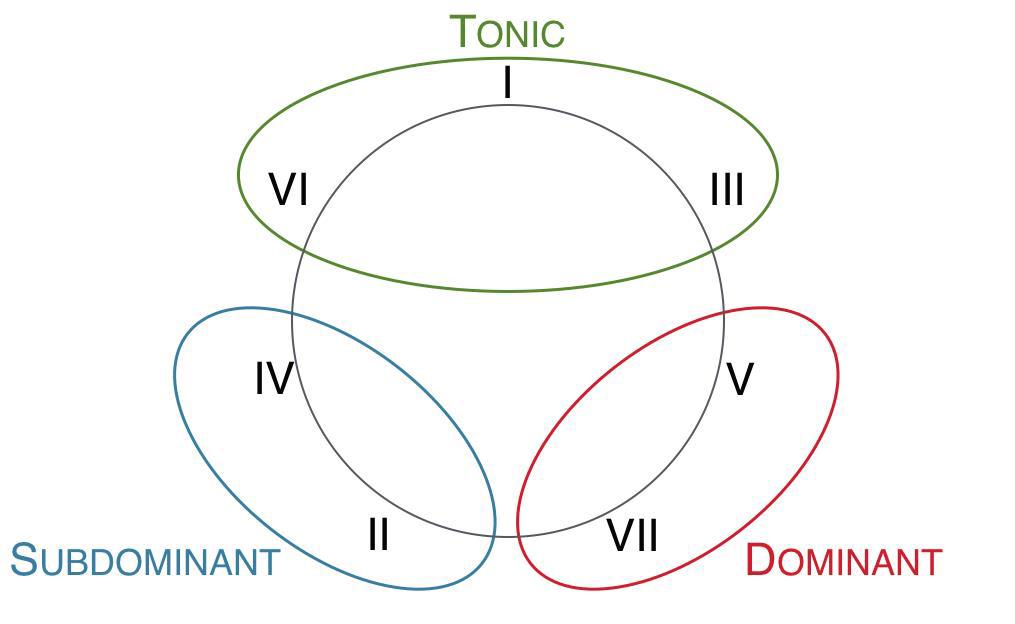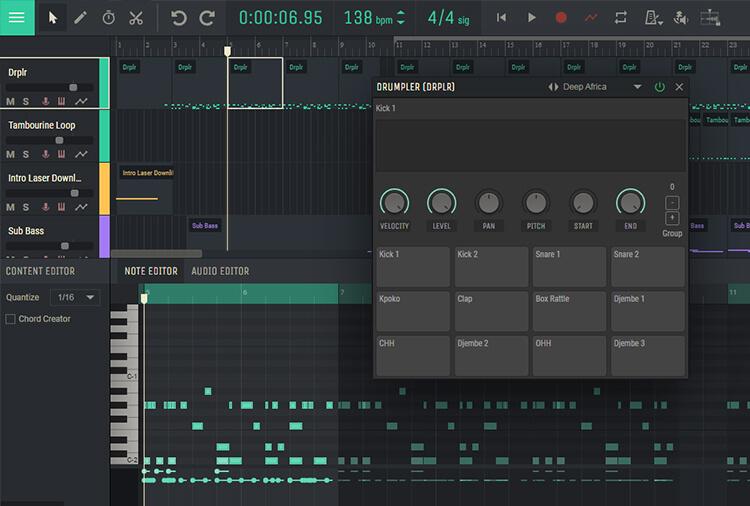Arpeggiator VST
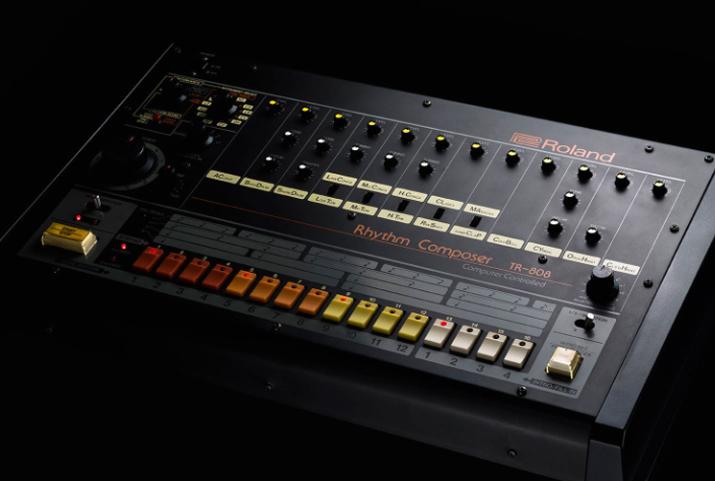
An arpeggiator VST (Virtual Studio Technology) is a software plugin that emulates the functionality of an arpeggiator within a digital audio workstation (DAW) or music production software.
An arpeggiator is a feature commonly found in synthesizers and electronic keyboards that automatically plays a sequence of individual notes from a chord in a predefined pattern. This can create a rhythmic and melodic effect that adds movement and complexity to the sound. The arpeggiator can be set to play the notes of a chord in various patterns such as up, down, up-down, random, or user-defined sequences.
Arpeggiator VST plugins provide users with the ability to apply arpeggiator effects to MIDI input within their DAW, allowing for real-time manipulation and creative exploration of musical ideas. These plugins typically offer a range of parameters and controls for adjusting the arpeggiator’s rate, pattern, octave range, note duration, and other settings to customize the resulting arpeggiated sequence.
Arpeggiator VST plugins are commonly used in electronic music production, but they can be found across various genres to add rhythmic interest, movement, and texture to melodies, chords, and other musical elements. They are often used to create intricate arpeggiated patterns, pulsating basslines, and dynamic rhythmic sequences.
1. Pitch Innovations Eternal Arps
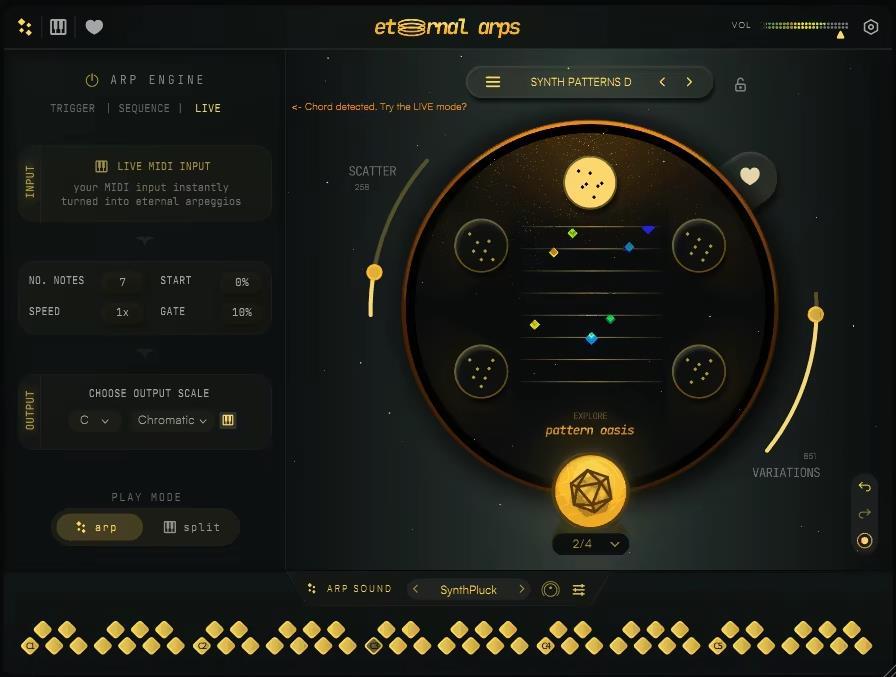
Eternal Arps isn’t just another arpeggiator — it’s designed to breathe life into your MIDI patterns and turn them into organic, flowing sequences. If you’re tired of rigid, robotic-sounding arps, this plugin delivers a sense of movement and expression, almost like a live musician is playing.
What sets Eternal Arps apart is how musical it feels. It transforms basic chords into evolving, dynamic phrases that change slightly every time you hit play. The result is something much more human and emotional than what you typically get from standard arpeggiators.
It comes loaded with over 300 presets covering everything from cinematic textures to intricate electronic rhythms. Whether you’re after smooth melodic lines or complex layered patterns, there’s plenty here to inspire — just load a preset and hear your progressions come to life instantly.
One standout feature is the Magic Dice — a creative randomizer that generates new patterns with a single click. It’s perfect for when you’re stuck or want to stumble onto something unexpected. It adds a fun, spontaneous edge to your workflow and often leads to happy accidents.
While Eternal Arps sounds incredibly natural, it might feel a bit deep for total beginners who just want basic arpeggio shapes. The interface is intuitive, but diving into advanced controls takes a little learning. That said, the payoff is worth it — once you get a feel for it, this tool adds serious musicality to your tracks.
Eternal Arps is available in VST, VST3, AU, and AAX formats for both macOS and Windows. If you’re looking for arpeggios that sound alive and expressive, this plugin is absolutely worth exploring. Try a few presets, roll the Magic Dice, and see how easily it fits into your creative process.
2. BLEASS Arpeggiator
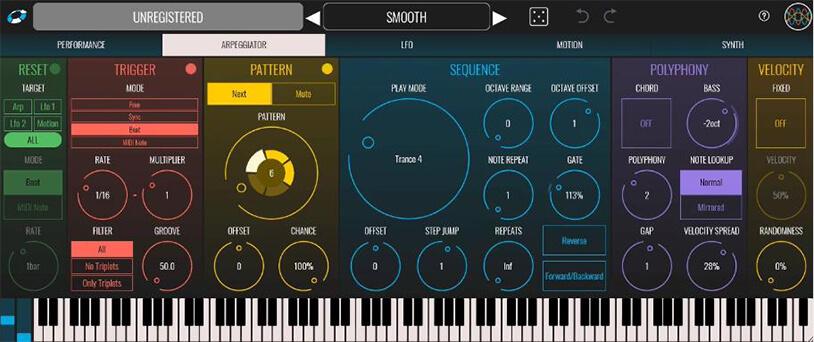
This arpeggiator offers an unconventional approach to generating rhythmic patterns. It successfully combines classic arpeggio principles with features that are often lacking in typical plugins. Thanks to this tool, it becomes easier to create not just sequences, but full-fledged musical structures with character.
Unlike most arpeggiators that work with simple linear patterns, this plugin allows you to build complex polyrhythms, control polyphony and use advanced modulation. All this makes it especially interesting for the electronic scene – both in studio work and live.
A big plus is the clear graphical interface designed for real-time control. Two XY pads open up new possibilities, especially when used on mobile devices like the iPad. You can literally “play” arpeggios with your fingers, adjusting the nuances of the sound on the go.
The built-in FM synthesizer allows you to generate bright and rich sounds right inside the plugin. This is convenient if you want to quickly get a result without connecting external synthesizers. All parameters are edited step by step, so that the construction of arpeggios can be as precise as possible.
The Motion Sequencer deserves special attention – a tool for step-by-step modulation. It allows parameters to change from bar to bar, thanks to which even the simplest pattern can sound new every time. In combination with customizable LFOs, this gives a huge scope for sound design and dynamics.
Mastering all the capabilities of the plugin will take a little time – especially if you have not worked with deep modulations before. But this arpeggiator is definitely worth studying. It provides not only functionality, but also inspiration – each parameter invites you to experiment and search for your own sound.
The Arpeggiator plugin is available in VST3, AU and AAX formats and works on both macOS and Windows. This is a powerful tool for those who want to go beyond the standard arpeggio and create lively, expressive music.
3. Arturia – ARP2600 V
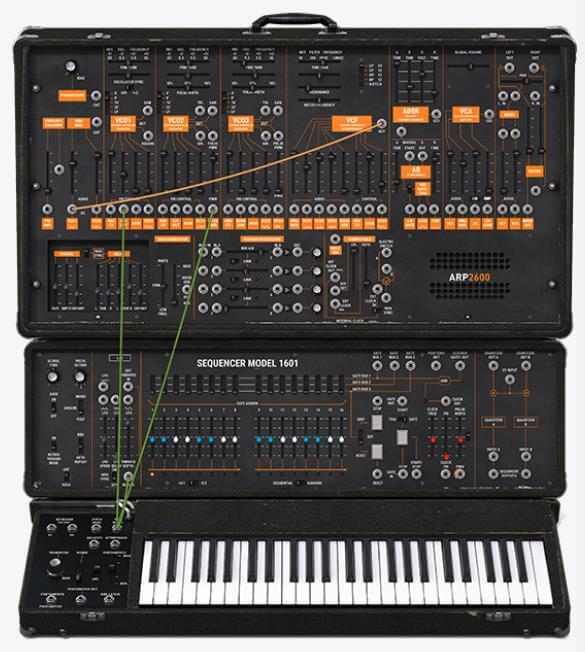
If you’ve ever been intrigued by the legendary ARP 2600, the ARP2600 V plugin brings that iconic synth into the modern studio, complete with new features that make it more flexible and accessible than ever.
This virtual instrument stays true to the semi-modular layout of the original, featuring the signature trio of oscillators, the resonant low-pass filter, and the step sequencer that helped shape the sound of early electronic music. Everything that made the original so influential is here — now with a modern twist.
What stands out is how the plugin blends vintage authenticity with useful modern updates. You get up to 32 voices of polyphony and full MIDI control, making it easy to integrate into today’s digital workflow. Built-in effects like delay, chorus, and an assignable LFO give you instant sound design options without needing external processing.
Sure, purists might argue that the high-frequency resonance doesn’t quite match the hardware’s grit. And it’s true — the top-end bite is a little softer. But for most producers, the tradeoff is well worth it. The tone is still rich and recognizable, and the added convenience more than makes up for minor differences.
Another huge advantage: over 500 included presets. From classic leads and basses to experimental textures and soundscapes, there’s a lot to explore. If you’re comfortable with modular routing and hands-on patching, you’ll feel right at home. If you’re new to the ARP world, expect a bit of a learning curve — but once you get the hang of it, the creative possibilities are vast.
ARP2600 V is available in VST, AU, AAX, and NKS formats for macOS and Windows. It’s a powerful, inspiring take on a vintage legend — built for the needs of today’s producers.
4. VPS Avenger 2
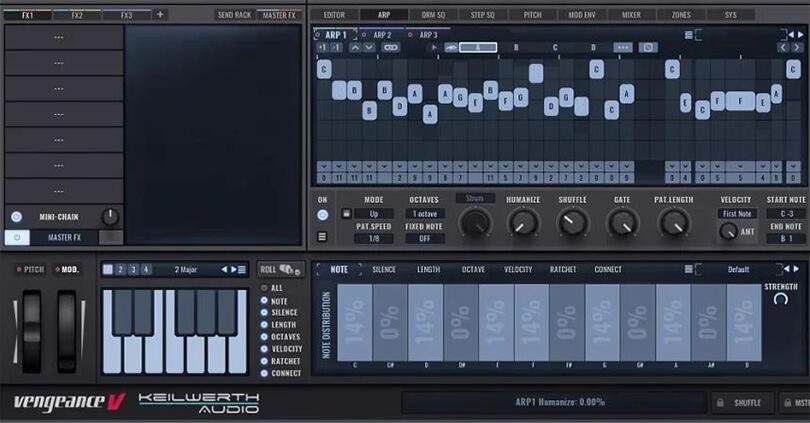
Avenger 2 isn’t just an arpeggiator plugin — it’s a full-fledged synth environment where you can sculpt arps from the ground up and push them as far as your imagination allows. Whether you’re crafting a simple melodic line or building a complex, evolving soundscape, this plugin gives you the kind of control that’s hard to beat.
What makes Avenger 2 truly stand out is its versatility. No matter the genre or complexity of your track, it handles everything from delicate cinematic textures to high-energy EDM leads with ease. Everything in this synth feels like it was designed for users who love to dig deep and fine-tune every layer of their sound.
The oscillator section is especially impressive. You get everything from classic analog waveforms to a massive library of wavetables and samples — all fully modulatable. That alone makes it perfect for creating arpeggios that feel alive, nuanced, and rich with movement.
Then there’s the modulation system — easily one of the most flexible I’ve ever used. With up to 256 modulation assignments available and every one fully customizable, you can build truly intricate mod paths. If you love dynamic, expressive sound design, this is where Avenger 2 shines.
One of the most powerful features is the multi-arp engine. You can run up to eight independent arpeggiators at once, each with its own pattern and parameters. Combined with the built-in step sequencers, this lets you stack evolving layers, sync different grooves, or build full rhythmic arrangements inside a single patch.
That said, the sheer depth of the interface can be a bit much at first — especially if you’re used to minimal or streamlined plugins. There’s definitely a learning curve. But once you get past the initial overwhelm, the payoff is huge. This isn’t just an arp plugin; it’s a creative playground for sound designers.
Avenger 2 is available in VST2, VST3, AU, and AAX formats for both macOS and Windows. If you’re looking for a tool that gives you total control over your arpeggios — and so much more — this one’s absolutely worth diving into.
5. Stepic By Devicemeister
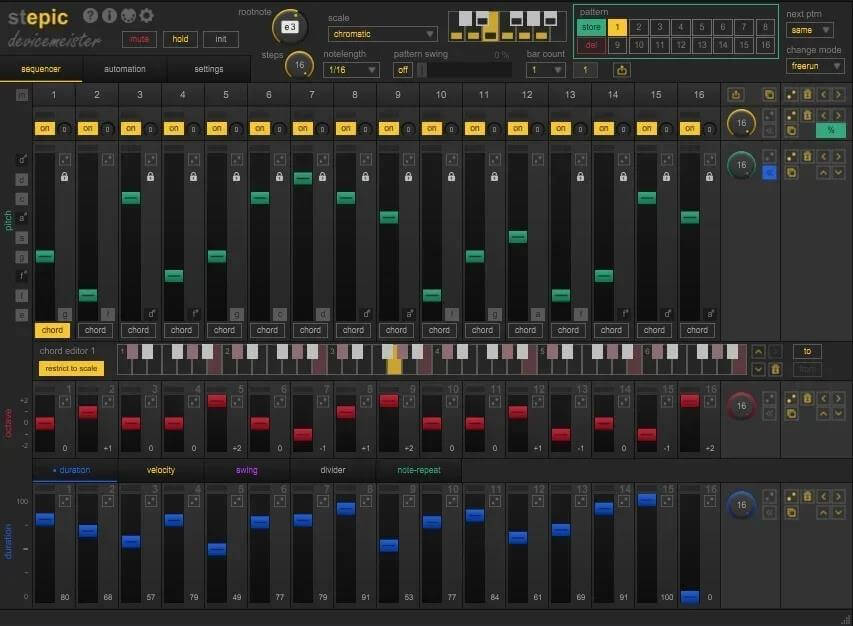
Stepic isn’t just another step sequencer — it’s a full-scale composition tool designed for producers who want more than simple note triggering. With polyphonic sequencing, deep modulation, and smart MIDI integration, it pushes way past the limits of standard DAW tools.
At the core of Stepic is a 16-step sequencer that can be extended up to 16 full bars, giving you up to 4,096 individual steps to work with. What really makes it shine is its ability to sequence pitch, gate length, and octave independently. This allows for evolving patterns that feel alive and never static.
One of Stepic’s most creative features is the built-in chord editor. You can assign unique chords to each step, which opens up a whole new world of harmonic variation. And if you want more unpredictability, the plugin offers randomized step order, note repeats, probability settings, and more — all of which help inject movement and variation into your tracks.
Modulation is where Stepic truly comes alive. With 8 dedicated modulation lanes, you can control everything from filter cutoff to wavetable position, adding real-time motion to any parameter on your favorite synths or effects. It’s not just about sequencing notes — it’s about shaping evolving textures that respond to every bar.
Thanks to full MIDI CC support, Stepic integrates seamlessly with both software instruments and external gear. Whether you’re working in the box or in a hybrid setup, it fits right in and gives you precise control over every connected device.
That said, there is a learning curve. With over 200 sequencing and randomization options, it can feel overwhelming at first — especially if you’re used to more minimal step sequencers. But once you get the hang of it, Stepic becomes an essential tool for adding rich movement, variation, and complexity to your music.
Stepic is available in VST3 and AU formats for macOS and Windows. If you’re looking to go beyond basic step sequencing and bring life to your MIDI patterns, this is a plugin worth diving into.
6. W.A. Production MIDIQ
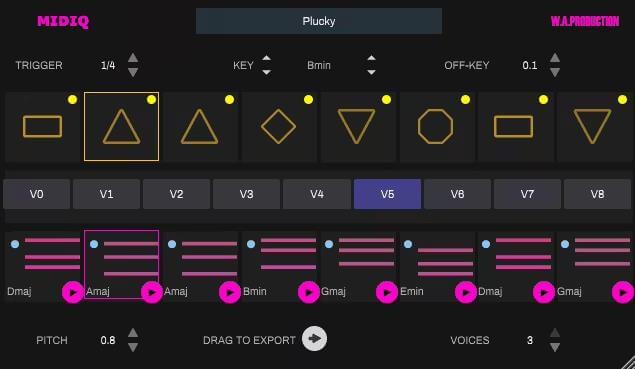
MIDIQ is one of those tools that feels like a musical shortcut — a smart, intuitive way to break out of creative ruts and explore new harmonic ideas with just a few clicks. It’s not about overcomplicating your workflow — it’s about giving you instant access to fresh chord progressions without getting bogged down in theory.
What makes MIDIQ stand out is its slot-machine-style interface. You set a basic structure or scale, hit a button, and the plugin generates full chord sequences for you to explore. It’s surprisingly effective — the built-in algorithms produce musical, usable results that feel intentional rather than random.
What I really love about using it is how quickly you can stumble upon something new. Found a chord that doesn’t quite fit? Just swap it out and move on. It’s that easy. The plugin keeps you in a creative flow without overthinking — perfect for sketching out ideas or building the foundation of a track.
MIDIQ also fits smoothly into most production environments. You can assign different chord sequences across multiple tracks, route them through arpeggiators, or manipulate them further in your DAW. Copy-paste functionality works seamlessly, and all presets are saved with your session, so everything stays right where you left it.
Now, it’s not the most advanced MIDI processor out there. If you’re looking for super-deep customization or want to control every tiny detail of your composition, MIDIQ probably won’t replace more complex tools. But that’s not the point — it’s designed to be fast, flexible, and focused on inspiration.
MIDIQ is available in VST, VST3, and AU formats for both macOS and Windows. If you’re looking for a plugin that helps you generate ideas quickly and keep your creativity moving, this one’s definitely worth checking out.
7. Modalics EON-Arp
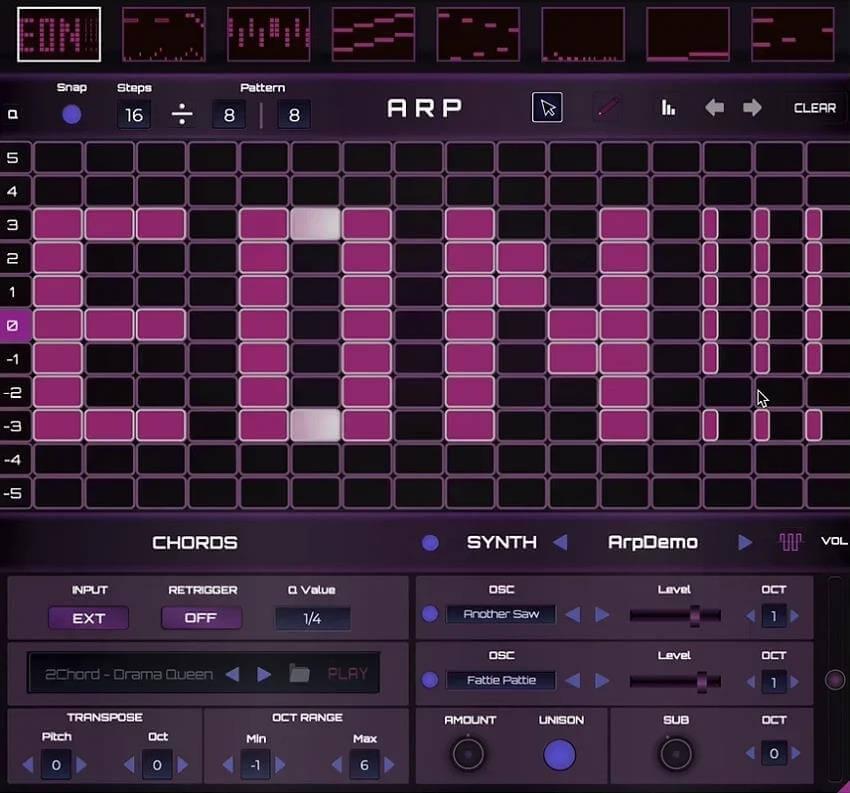
EON-Arp is built for producers who are tired of generic arpeggio patterns. This plugin gives you total control over rhythm, note structure, and modulation, letting you design intricate, evolving sequences that go far beyond the usual looped patterns.
One of the standout features is the 128-step sequencing engine. You can fine-tune every note’s position, length, and velocity with precision. Whether you prefer tight grid-locked edits or freeform rhythmic movement, EON-Arp adapts to your workflow and helps shape patterns that feel truly dynamic.
The built-in mini-synth is a nice touch, especially for quick sketching. It comes with over 100 chord progressions and preset scales, which makes it easy to get ideas flowing without having to route everything through your main virtual instruments right away. That said, EON-Arp really comes to life when you pair it with your favorite synths and let it drive external sounds.
Another powerful feature is the snapshot system. Each preset can store up to eight variations, allowing you to switch between pattern states on the fly. This makes it perfect for adding movement and variation in both studio productions and live sets. The ability to cycle through different arpeggio versions in real time adds a whole new layer of performance flexibility.
Like any deep tool, there’s a bit of a learning curve — especially if you’re new to advanced arpeggiators. But once you get comfortable with the interface, EON-Arp becomes a playground for rhythmic experimentation and melodic layering.
EON-Arp is available in VST, VST3, AAX, and AU formats for macOS and Windows. It’s a flexible and inspiring tool for anyone looking to go beyond basic MIDI arps and inject real character into their sequences — all without breaking the bank.
8. u-he Hive 2
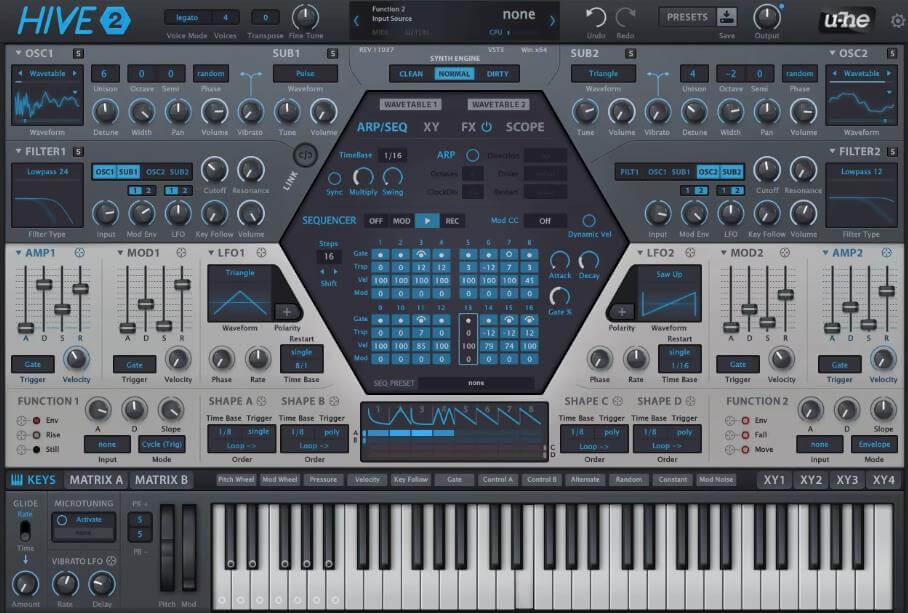
Hive 2 is a virtual synth that strikes a smart balance between high-end sound design and ease of use. Its clean interface keeps distractions to a minimum, while under the hood, it’s fully equipped for building rich textures, layered pads, and cutting-edge sounds. Whether you’re sketching out ideas or diving into deep soundscapes, Hive 2 keeps up effortlessly.
At its core, Hive 2 offers three distinct synthesis engines, including wavetable support. With two fully independent oscillators and a drag-and-drop modulation matrix, you get full control over shaping and evolving your sound. Assigning sources and targets is quick and intuitive, making complex modulation easy even if you’re not a synth expert.
Need motion and rhythm? Hive 2 includes both an arpeggiator and a shape sequencer. The sequencer is especially useful for modulating parameters like filter cutoff or volume over time, adding a sense of movement and depth without having to draw in automation by hand.
Hive 2 ships with over 2,000 factory presets, all NKS-ready, covering a wide range of genres and styles. There are seven onboard effects — distortion, chorus, delay, phaser, EQ, reverb, and compressor — all easily tweakable and re-orderable. This gives you tons of flexibility without needing to load up external plugins.
One of Hive 2’s standout features is how quick and effortless modulation feels. You just drag an LFO or envelope to any parameter, and you’re off. It makes sound design feel natural and fast. Plus, Hive 2 is super light on CPU, so you can stack multiple instances in a session without slowing down your workflow.
While the interface is sleek and user-friendly, it might feel a bit barebones if you’re used to synths with detailed visual feedback or animated waveforms. But once you get the hang of it, the minimal design becomes a strength — letting you focus on sound, not visuals.
Hive 2 runs in AU2, VST2, and VST3 formats and works on both macOS and Windows, making it easy to integrate into any major DAW setup.
Hive 2 is a fast, efficient, and highly capable synth that encourages experimentation without getting in your way. Whether you’re a beginner or a seasoned producer, it delivers quality sounds and smooth performance — all without bogging down your system.
9. Dymai Sound Proclethya
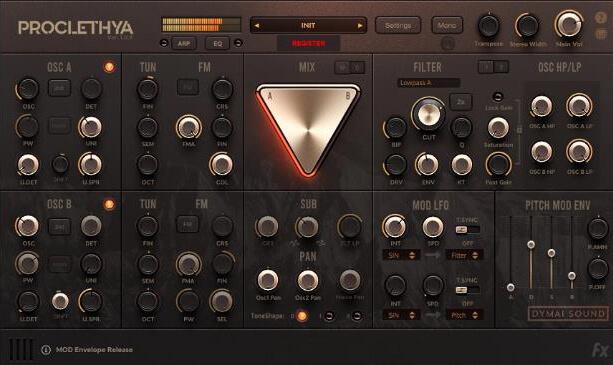
Proclethya by Dymai Sound is a virtual analog synth plugin that blends classic analog character with digital versatility. Built around three core elements — distortion, noise, and pitch drift — it delivers rich, textured sound with a modern feature set. With its advanced arpeggiator, multi-layered oscillators, onboard effects, and flexible routing options, Proclethya is especially well-suited for genres like trance, synthwave, and cinematic electronic music.
One of Proclethya’s biggest strengths is its arpeggiator. It gives you control over note duration, tempo, pitch, movement, and swing. You can build sequences with up to 64 steps and fine-tune groove using the octave range, shuffle settings, and resolution down to 1/64t. The programmable Length knob and built-in pump effect make it easy to dial in rhythmic, sidechain-style movement without external tools.
Proclethya features two main oscillators, each capable of running an additional detuned “2nd” oscillator for a wider, thicker sound. Oscillator A offers five waveform shapes — sine, saw, square, triangle, and noise — with pulse-width modulation on square and triangle waves. Both oscillators support detuning and stereo spread across up to ten voices for lush unison pads. The Drift knob introduces vintage-style pitch instability, emulating the organic movement of classic hardware synths.
Each oscillator comes with its own FM shaper section. Oscillator A is routed through a global tuner and FM processor, with separate controls for octave, semitone, and fine-tuning. Once FM is activated, you can adjust the wet/dry mix, rough frequency response (CRS), fine tuning (FIN), and tonal coloration (COL) of the FM signal — giving you a lot of control over harmonic content and texture.
The MIX module allows for two blending modes. CROSSOVER lets you morph smoothly between Oscillator A and B, while MIX gives you independent volume control over each oscillator. You can also activate a sub-oscillator or noise generator by toggling the SUB and NOISE switches — great for adding low-end weight or grit to your sound.
Proclethya includes two LFOs for modulating pitch, filter cutoff, and modulation depth. LFO 2 also supports bipolar modulation, adding more expressiveness. Each oscillator has its own dedicated filter section, with several filter types including analog and ladder-style options. This makes it easy to sculpt your tone per layer without needing complex routing.
Onboard FX modules include Delay, Reverb, Phaser, and Chorus. A standout feature here is the Duck control — when applied to Delay or Reverb, it automatically reduces the wet signal in response to incoming audio. This creates a natural sidechain effect, perfect for keeping leads and atmospheres clean in dense mixes.
Proclethya runs on Windows 7 or later and macOS 10.9 or newer. It supports both 32-bit and 64-bit systems and is available in VST, RTAS, AU, and AAX formats — making it compatible with all major DAWs.
While the synth delivers a ton of functionality, its modulation matrix is somewhat limited — allowing routing of only 3 or 4 parameters. In comparison, many modern synths offer far more extensive modulation options. More routing control over parameters like pan, filter Q, or volume would’ve been a big plus.
Still, if you’re into rhythmic programming and want a synth with a robust arpeggiator and vintage-inspired tone, Proclethya is absolutely worth a try. It brings character, depth, and groove to the table — especially for producers who like to stay hands-on.
10. Arturia Acid V
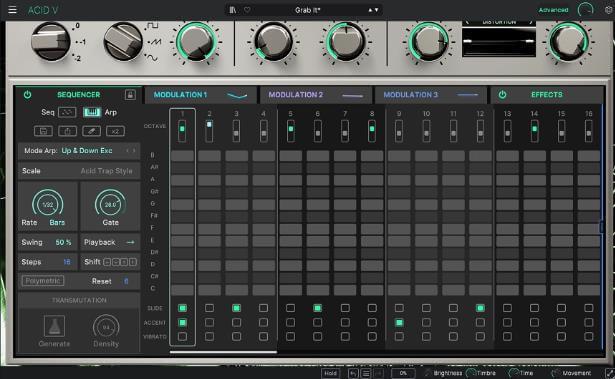
Acid V from Arturia is a modern software take on the legendary Roland TB-303, upgraded with powerful features for today’s music producers. Designed with a focus on arpeggios and pattern sequencing, it excels at generating sharp, acid-style basslines with gritty filters, saturation, and nuanced rhythmic control. Its clean, intuitive interface makes it easy to dive in and start shaping sequences, while its sonic potential goes far beyond classic 303 emulation.
At the core of Acid V is a 64-step polymetric sequencer that goes well beyond traditional step-editing. You can build detailed rhythmic phrases, add slides, accents, and octave shifts, and even drag patterns into your DAW as MIDI clips. The built-in arpeggiator is equally flexible, giving you hands-on control over groove and note behavior, perfect for creating movement and complexity in your tracks.
Acid V allows you to stack up to four effects at once, chosen from a suite of 17 studio-grade processors. Highlights include Pitch-Shift Delay, Super Unison, Multiband Compressor, and Multiflanger — each with its own dedicated controls. The distortion section deserves special mention, offering 14 different algorithms that let you shape anything from subtle grit to full-blown acid chaos.
A powerful sub-oscillator is built in to enrich your low end. It spans two octaves and lets you choose between square and triangle waves, with vibrato modulation for expressive movement. Whether you’re designing growling leads or deep foundational bass, the sub brings serious weight and flexibility to your sound.
To jumpstart your creativity, Acid V includes over 150 factory presets — ranging from iconic acid lines to bold, experimental patches. Even better, the plugin features built-in interactive tutorials. These guides walk you through every part of the instrument, helping you learn not just the basics, but also advanced sound design tricks straight from the pros.
Acid V is compatible with Windows 10+ (64-bit) and macOS 10.13+, and runs smoothly on modern quad-core processors. It supports VST, AAX, Audio Unit, NKS, and standalone modes, with streamlined installation and updates via Arturia Software Center.
Acid V isn’t just a 303 clone — it’s a fully modern instrument built for the demands of contemporary production. With an advanced sequencer, rich modulation, and a powerful effects engine, it’s the perfect tool for anyone working in electronic genres who wants basslines that groove, evolve, and hit hard. Whether you’re a seasoned producer or just getting into acid sounds, Acid V brings classic vibes with cutting-edge control.
11. XFer Cthulhu
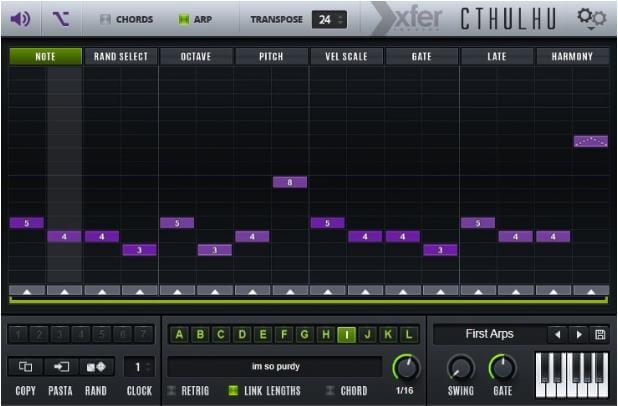
If you’re looking to level up your songwriting workflow and make your harmonies more dynamic, Cthulhu by Xfer is a plugin worth checking out. It’s more than just an arpeggiator — it’s a full-on idea machine that can help break creative blocks and speed up production when inspiration runs low.
Cthulhu combines two main modules into one streamlined plugin. The first is a chord module packed with over 150 built-in chord presets. You can start using them right out of the gate or record your own custom sets. Each chord can be triggered with a single key press, which is a game-changer for live performance and rapid composition. The plugin also lets you sort chords in different ways — chromatically, by lowest note, or using the circle of fifths, making it easier to experiment and find the right vibe.
The second module is the arpeggiator, which gives you deep control over rhythm and melodic flow. You can tweak pretty much everything — note order, randomization, pitch, velocity, gate, delay, octave range, and even harmony. You can build up to eight patterns, each with its own length, which opens the door to polyrhythmic sequences and complex grooves that feel organic and unpredictable.
Cthulhu runs on 64-bit Windows (7 and up) and macOS (10.11 and later), and supports VST2, VST3, AU, and AAX formats — so it’ll work with just about any modern DAW.
What makes Cthulhu special is how it blends intuitive tools with deep creative flexibility. It’s perfect for producers who want fast, expressive chord progressions, as well as those who enjoy diving into more advanced rhythmic structures. And if you’re in the mood for some chaos, just hit the “WTF?” button — it’ll spit out something wild that might spark your next track.
Cthulhu isn’t just a MIDI effect — it’s a full-on creative partner, ideal for building harmony, generating new ideas, and bringing unexpected movement into your music.
12. Spectrasonics Omnisphere 2
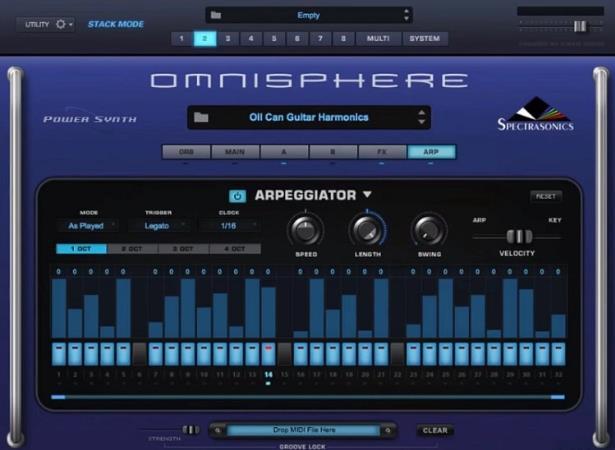
Omnisphere isn’t just a plugin — it’s an entire sound design ecosystem. Widely regarded as one of the most powerful software synthesizers out there, it offers an impressive blend of flexibility, pro-grade sound, and creative tools that make it a go-to choice for music producers, composers, and sound designers alike.
Let’s start with the arpeggiator — one of Omnisphere’s standout features. It’s a fully customizable 32-step sequencer that lets you control everything from velocity and pattern direction to chord voicing and string-style phrasing. You can even modulate specific parameters on each individual step. And here’s the kicker: each of Omnisphere’s eight layers has its own arpeggiator, which means you can run up to eight independent arps at once. That opens up massive potential for building rich, evolving textures and rhythmic complexity.
The sound library is nothing short of massive. With over 14,000 presets included, you’ll find everything from lush pads and cinematic textures to punchy basses and experimental tones. These sounds are studio-ready right out of the box, and Spectrasonics keeps expanding the library with each update — making Omnisphere just as relevant for scoring film and games as it is for making cutting-edge music.
On the FX side, Omnisphere is stacked with 58 high-quality processors. There’s all the bread-and-butter stuff like reverb, delay, EQ, chorus, phaser, and compression — but also more boutique-style tools like guitar amps, analog-style saturation, tube distortion, wah-wah, and multiband expanders. Each effect comes with its own custom interface, and they sound as good as they look.
As for synthesis, each patch can include up to four layers, and every layer supports up to 20 oscillators — pulled from both sample-based sources and traditional synth waveforms. Add to that 8 LFOs per patch, more than 30 filter types, complex envelope control, and robust modulation routing — and you’ve got an insane amount of sonic control at your fingertips.
Omnisphere is compatible with 64-bit Windows (7 or higher), macOS (10.13 or higher), and Linux, and supports VST2, VST3, AU, and AAX formats — so it’ll slot right into whatever DAW you’re using.
Bottom line: Omnisphere is a beast. It’s packed with features that would take pages to fully list, but its deep arpeggiator, massive library, built-in effects, and powerful synth engine make it one of the most versatile tools out there. Whether you’re making beats, scoring scenes, or just experimenting with sound, Omnisphere delivers.
13. TAL-U-NO-LX
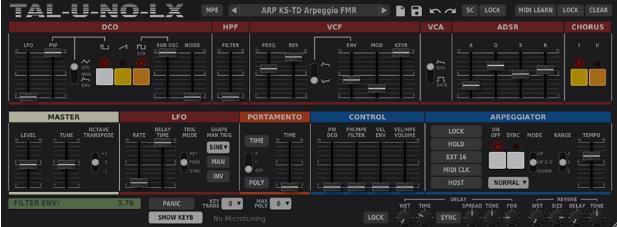
TAL-U-No-LX is a spot-on virtual emulation of the iconic Roland JUNO-60, bringing the warmth and character of vintage analog synthesis into your DAW — with some smart enhancements under the hood. The interface stays true to the original’s streamlined design, making it easy to dial in classic tones, while subtle tweaks and added features offer more creative flexibility.
Unlike the original hardware, TAL-U-No-LX includes a more versatile arpeggiator. You get three playback modes — up, down, and up/down — plus DAW sync support, which was never available on the JUNO-60. It lets you adjust the arpeggiator range across 1 to 3 octaves and fine-tune the tempo manually (1–25 Hz) or sync it to your project’s timing divisions (1/8, 1/16, 1/32, 1/64). This makes it incredibly easy to lock into your track’s groove and build rhythmically complex patterns.
The synth engine is centered around a single oscillator with saw and pulse waveforms, PWM control, a sub-oscillator, and a noise generator. You’ve got a filter section with 24 dB/oct low-pass and high-pass filters, full keyboard tracking for filter modulation, and one envelope along with a single LFO to shape volume, filter cutoff, pulse width, or pitch modulation.
On top of that, the plugin includes the signature JUNO chorus effect — instantly recognizable and beautifully modeled. TAL also added delay and reverb units, giving you more sound design power right inside the synth without needing to reach for extra plugins.
Small but thoughtful features like KEEP, which preserves your arpeggiator settings when switching presets, and HOLD, which maintains your arp pattern while playing, make this plugin especially performance-friendly.
TAL-U-No-LX runs on Windows 7 and up, and macOS 10.9 or later, in 64-bit only. It supports VST2, VST3, AU, and AAX formats, so it’s compatible with nearly any modern DAW setup.
If you’re chasing that unmistakable JUNO tone but want more flexibility and convenience in your workflow, TAL-U-No-LX delivers. It’s a perfect blend of vintage character and digital control — all without breaking the bank.
14. Tone2 Icarus 2
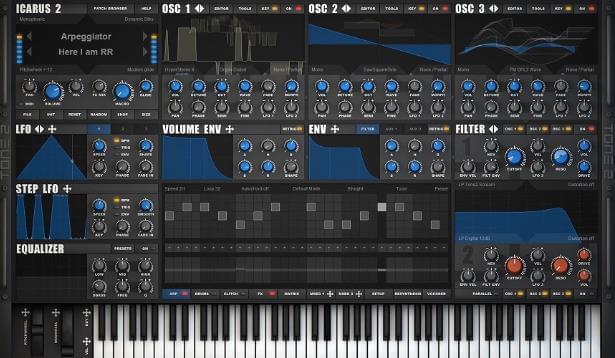
Icarus 2 is Tone2’s flagship synth, built to deliver a massive range of sonic capabilities without overwhelming the user. It’s more than just a synth — it’s a full-blown sound design environment that feels right at home in genres like EDM, trap, DnB, trance, and cinematic scoring. Despite its depth, Icarus 2 keeps things intuitive with drag-and-drop modulation, a clean layout, and smart organization.
At the core of Icarus 2 is an incredibly versatile synthesis engine. You get three oscillators, each capable of switching between multiple synthesis types — wavetable, FM (with six operators), granular, additive, subtractive, vocoder, formant shaping, ring mod, physical modeling, harmonic morphing, and even FFT-based filtering. There’s support for unison stacking, 3D morphing, and advanced modulation — all designed to help you sculpt intricate, evolving textures from the ground up.
Filter design is another standout. Icarus 2 includes two fully independent filter modules, each offering 63 filter types, multiple modulation sources, and 9-style distortion per filter. Whether you need clean tone-shaping or aggressive sonic destruction, it’s all built in.
When it comes to rhythm and motion, Icarus 2 gives you serious creative tools. The arpeggiator allows for per-step transposition, modulation, and playback behavior like glide, chord, up/down, and more. There’s even an auto-chord generator to instantly spark new progressions. Add to that a full-featured drum sequencer with built-in sounds (or import your own), plus a glitch sequencer for stutters, pitch stops, gates, and tremolo — powered by 10 real-time effect modules like bit-crush, degrade, and filtering.
Effects are another strong suit. Icarus 2 packs in 54 high-quality processors — everything from reverb, delay, chorus, phaser, flanger, and vibrato, to EQ, compression, saturation, stereo imaging, auto-panning, microtuning, surround encoding, and more. The effects chain is modular, and you can save/load effect setups separately, which is a huge time-saver during production.
Even with all these features, Icarus 2 runs surprisingly light on the CPU, making it ideal for larger, more complex sessions. It’s available for 32- and 64-bit Windows XP and up, and 64-bit macOS 10.7 and later. Supported formats include VST2, VST3, and AU.
While synths like Serum and Zebra tend to get the spotlight, Icarus 2 is a true hidden gem. This review barely scratches the surface, especially when it comes to its deep arpeggiation and sequencing tools. With multi-stage envelopes, 16 sine-wave LFOs, morphable LFOs, and a dedicated step-gate modulator, it’s an insane modulation playground. If you’re chasing bold new sounds, Icarus 2 won’t let you down.
15. Kirnu Interactive Cream
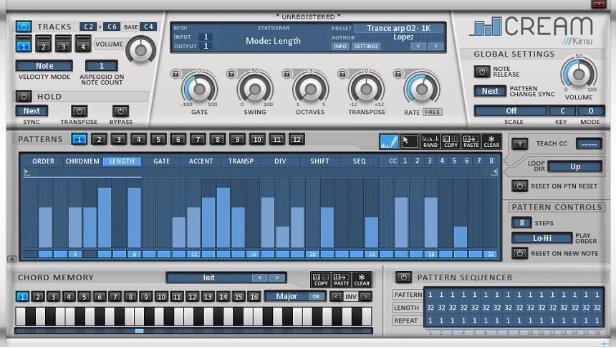
If you’re into live performance or hands-on MIDI composition, Kirnu Cream is a tool you’ll definitely want in your arsenal. This plugin isn’t just a basic arpeggiator — it’s a full-fledged MIDI performance sequencer with advanced features that make writing and performing complex patterns fast, intuitive, and musical. Even though it’s been around for a while, Cream remains one of the most flexible and capable arpeggiator plugins available today.
At the heart of Cream is a powerful step sequencer. Each of its four tracks can hold up to 12 patterns, and every pattern gives you control over nine different parameters — including note length, gate, accent, transposition, and MIDI CC. That last one is especially useful when you want to modulate synths or samplers beyond just note playback. You’ll also find global controls like tempo scaling, scale snapping, and pitch shifting, giving you even more control over your performance.
Chord functionality is another major highlight. The “Chord Memory” feature lets you store full chord voicings and trigger them with a single key, making Cream perfect for live sets or one-handed playing. You can also invert chords with a single click, which makes on-the-fly harmonic changes effortless and fun. It’s a great way to keep your hands free and your ideas flowing, especially in performance-heavy genres like house, techno, or ambient.
Cream also includes a built-in Pattern Sequencer, letting you chain patterns into a playlist-style setup. This makes it possible to build entire song sections directly within the plugin — no need to constantly switch patterns by hand. Whether you’re composing a full arrangement or improvising live, this function adds real depth to your workflow.
Compatibility is solid: Kirnu Cream runs on 64-bit Windows (2000 and up) and macOS (10.5 and later). It supports VST2, VST3, AU, and LPX MIDI FX formats, so you can easily slot it into nearly any DAW setup.
Overall, Kirnu Cream stands out by doing one thing really well: letting you build musically rich, dynamic patterns with minimal effort. Its workflow is fast, the feature set is deep, and the performance tools make it just as useful on stage as it is in the studio. If you’re looking for an arpeggiator that goes way beyond the basics, Cream delivers.


